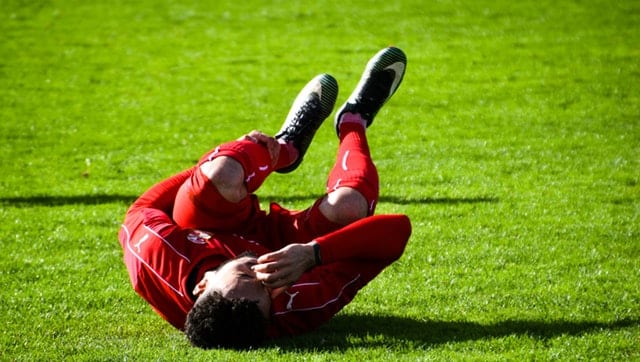
It goes without saying that sportsmen are prone to injuries. Wounds and injuries not only keep a sportsperson away from the game, but also end up affecting the individual’s overall fitness. Athletes have this habit of throwing themselves on the field. That is where the injuries come into the picture. At times, vigorous training sessions can also lead to injuries.
Athletes are prone to injuries of various kinds. Here are a few examples:
- Sprains
- Strains
- Joint injuries (ankles, knees and shoulders can get hurt)
- Muscle injuries
- Shoulder dislocations
- Fractures ( simple and compound)
- Achilles tendon injuries
Causes of sport injuries may include:
- Excessive training
- Wearing inappropriate sporting gear
- Playing when exhausted can also lead to injuries
- Inadequate warm-up before hitting the field
As an athlete, one needs to pay an extra bit of attention towards injury prevention. Taking injuries for granted can lead to severe problems in the long run.
Here are a few handy tips that can help minimize injuries
Injury surveillance
Trainers can provide injury prevention screenings and detect various underlying conditions that may lead to injuries. They are trained to provide comprehensive healthcare services and first-aid. Contemporary injury prevention techniques are highly scientific in nature and provide detailed assessments of an athlete’s overall health.
Developing a comprehensive training plan
This is much more than just strength and endurance training. Young athletes need to develop a detailed training plan. Rest days are an important part of the overall training programme. Adequate rest allows your body to heal. should incorporate rest days to allow the body to heal. Also, massaging can help relieve stress while accelerating the healing process. Of late, many budding medical practitioners are enrolling themselves in sports massage courses in southampton.
Know the limitations
Young athletes, especially cricketers and footballers, go through a lot of rigorous training sessions in order to prepare for the season. In all fairness, such rigorous workouts can lead to fatigue, dehydration, and various kinds of injuries. In order to prevent such injuries, coaches and trainers should monitor an athlete’s average workout time. Missing a game because of injuries and fatigue is perhaps the last thing an athlete wants.
Replacing obsolete equipment
Footballers, cricketers and runners suffer from shin splints. Such an injury occurs when you wear a worn-out pair of shoes. To prevent this, it is important to get the shoes replaced after every 300 to 500 miles of use. Similarly, make sure treadmills, cycles and dumbbells are intact. You might end up hurting yourself if your equipment begins malfunctioning.
Rest is important
It’s quite common for athletes to jump from one sporting season to the other. Cricketers plying their trade in T20 leagues across the globe get to play a lot of matches. There’s BBL in December, followed by the IPL in April-May. And then in June, spectators get to witness some high-voltage action in the Natwest T20 Blast. Now, player plying his trade in all of these leagues is bound to feel exhausted. The game time might be less, but the level of energy required is more. Lack of adequate rest between tournaments can lead to severe injuries.
Plan, Plan, and plan
Nutrition’s important. Keep cereals and fruits ready in case you feel hungry. Physically-demanding sporting activities require a heavy protein diet to keep you going. Furthermore, a balanced diet accelerates the healing process.
Conclusion
Injuries can be fatal. Frequent injuries can shorten the playing career of an individual. Injury prevention allows a sportsperson to play more games. Also, it goes without saying that if an individual is fit and injury free, then he’ll be able to give his 100% in every single game.
